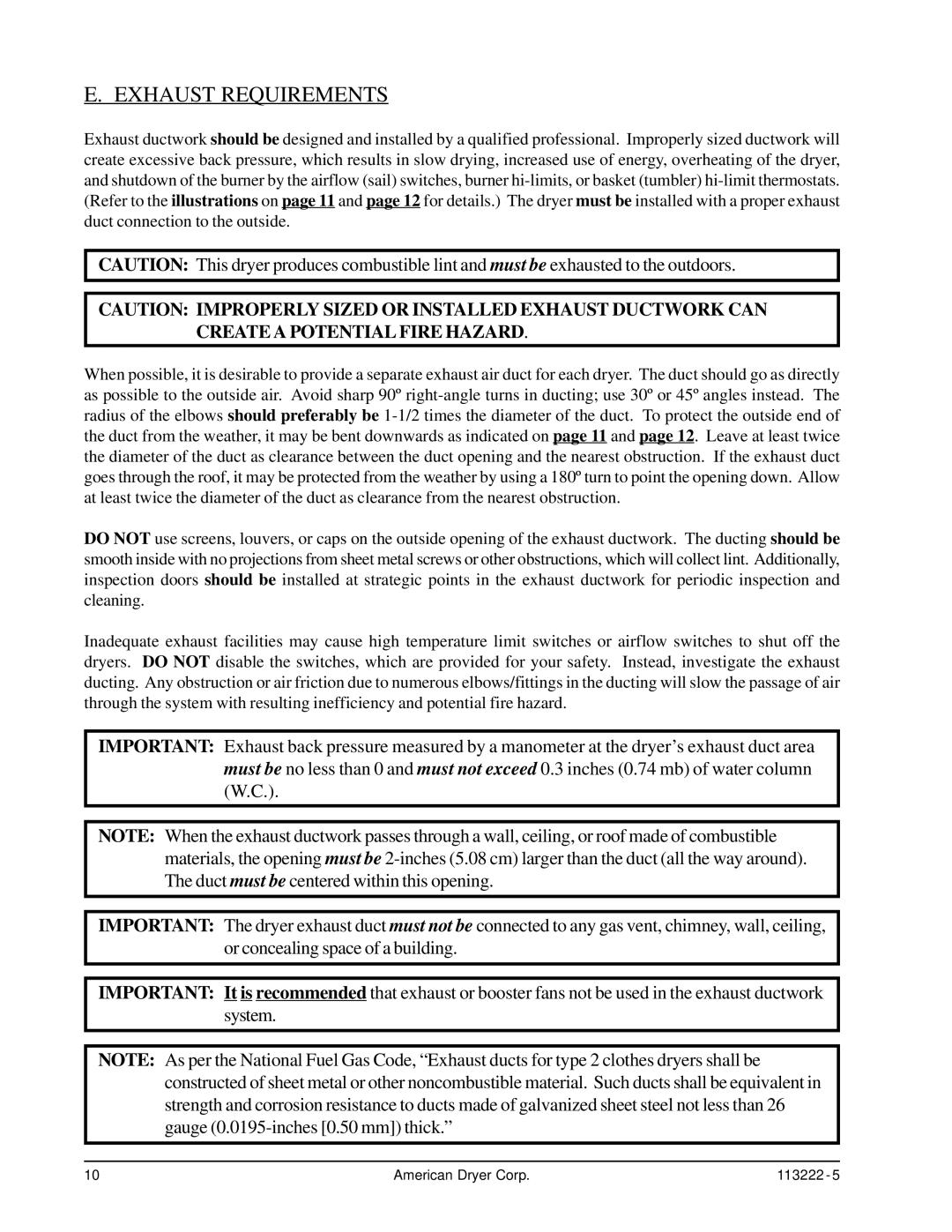
E. EXHAUST REQUIREMENTS
Exhaust ductwork should be designed and installed by a qualified professional. Improperly sized ductwork will create excessive back pressure, which results in slow drying, increased use of energy, overheating of the dryer, and shutdown of the burner by the airflow (sail) switches, burner
CAUTION: This dryer produces combustible lint and must be exhausted to the outdoors.
CAUTION: IMPROPERLY SIZED OR INSTALLED EXHAUST DUCTWORK CAN CREATE A POTENTIAL FIRE HAZARD.
When possible, it is desirable to provide a separate exhaust air duct for each dryer. The duct should go as directly as possible to the outside air. Avoid sharp 90º
DO NOT use screens, louvers, or caps on the outside opening of the exhaust ductwork. The ducting should be smooth inside with no projections from sheet metal screws or other obstructions, which will collect lint. Additionally, inspection doors should be installed at strategic points in the exhaust ductwork for periodic inspection and cleaning.
Inadequate exhaust facilities may cause high temperature limit switches or airflow switches to shut off the dryers. DO NOT disable the switches, which are provided for your safety. Instead, investigate the exhaust ducting. Any obstruction or air friction due to numerous elbows/fittings in the ducting will slow the passage of air through the system with resulting inefficiency and potential fire hazard.
IMPORTANT: Exhaust back pressure measured by a manometer at the dryer’s exhaust duct area must be no less than 0 and must not exceed 0.3 inches (0.74 mb) of water column (W.C.).
NOTE: When the exhaust ductwork passes through a wall, ceiling, or roof made of combustible materials, the opening must be
IMPORTANT: The dryer exhaust duct must not be connected to any gas vent, chimney, wall, ceiling, or concealing space of a building.
IMPORTANT: It is recommended that exhaust or booster fans not be used in the exhaust ductwork system.
NOTE: As per the National Fuel Gas Code, “Exhaust ducts for type 2 clothes dryers shall be constructed of sheet metal or other noncombustible material. Such ducts shall be equivalent in strength and corrosion resistance to ducts made of galvanized sheet steel not less than 26 gauge
10 | American Dryer Corp. | 113222 - 5 |
